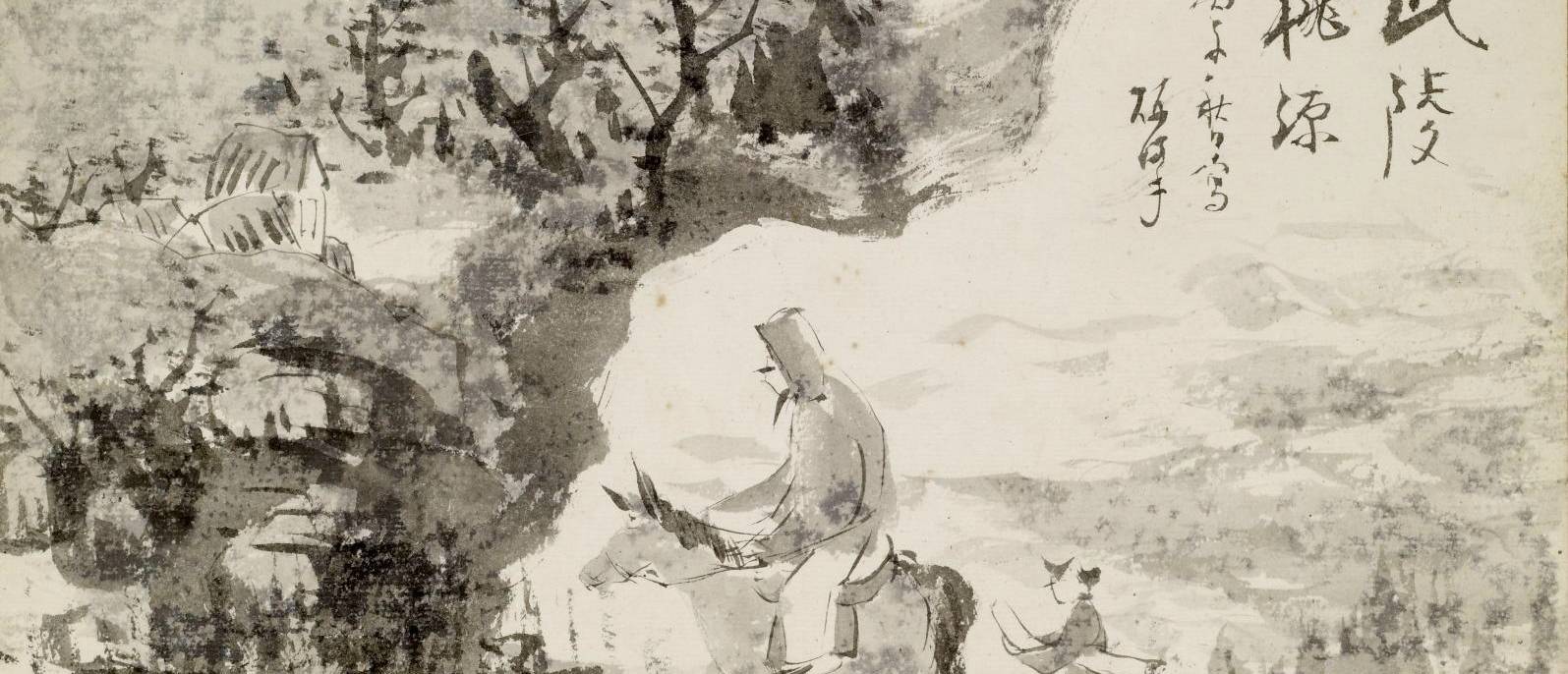Kobayashi Issa: Master and Rebel of Haiku
Deeply innovative even within one of poetry’s stricter genres, Issa is among haiku’s most emblematic exponents...
The artifice in poetry that we so marvel over takes its most discreet (nearly imperceptible) form in Japanese haiku. Lyrical miniatures, they’re constructed with but a few words and still less imagery, yet they dazzle in subtlety and brevity. This very simplicity, designed for maximum impact, is a sort of spiritual blow. It breaks the logical sequence of much lyric poetry and closes with a paradoxical, singular, unexpected ending. Haikus are tiny, limited portraits of but an instant, and whose echo continues even long after the poem has ended.
The particular graphic quality and depth of the genre has attracted the attention of some of the most fascinating literary minds; Jorge Luis Borges, Ezra Pound and Octavio Paz come to mind. The author Alan Watts, another lover of haiku, once described haiku as a piece that, more than any other work of art, might seem like a work of nature. The relation of this particular poetry to the natural world is evident as well in its imagination: we think of the animals and plants who inhabit it, and its constant references to the seasons of the year or to meteorological phenomena (like fog).
Among the great masters of haiku -Matsuo Basho, Yosa Buson, Masaoka Shiki – one stands out for his originality and courage: Kobayashi Issa (1763-1827). His life was marked by sadness, misery, and loss, and these are reflected, in an unexpected way, within his poetry.
Nearness, perhaps one of the most evident characteristics of Issa’s poetry, marks a new stylistic pattern in the haiku universe. Unlike the of other greats of the genre, Issa’s poems abound in sad, ironic references. Above all, they’re near to the intimate side of his life. Perhaps this is one reason Issa’s work was never fully accepted in his own time. It may also explain why many experts believe that Issa opened the genre to a wider audience; not through vulgarization, but through a pristine approach to events in the human dimension.
Kobayashi Issa wrote about 20,000 haikus during his lifetime. They were often accompanied by drawings he made himself. Below are but seven of them …
Goes out,
comes back—
the love life of a cat.
* * *
All the time I pray to Buddha
I keep on
killing mosquitoes.
* * *
The snow is melting
and the village is flooded
with children.
* * *
For you fleas too
the night must be long,
they must be lonely.
* * *
On a branch
floating downriver
a cricket, singing.
* * *
Don’t worry, spiders,
I keep house
casually.
* * *
Napped half the day;
no one
punished me!
English translations: Robert Hass
*Image: Public Domain
Related Articles
Why shrinking the size of life is synonymous of well-being
One of the great misunderstandings regarding modern spirituality is that to achieve it requires many things: readings, food, exercise, travel, groups and techniques. But perhaps it should be suggested
What is energy medicine yoga?
Energy Medicine Yoga (EMYoga) is slightly different from other types of Yoga, but it provides the same benefits in addition to a few very specific ones. One of them is that it gives you much more in
Red tea, the best antioxidant beverage on earth
Red tea is considered to be the most unusual of teas because it implies a consistently different preparation process. ––It is believed that its finding came upon surprisingly when traditional green
Is the internet on the verge of self-awareness?
More than 50 years ago, Marshall McLuhan described technology as an extension of our brains, constantly mutating and branching out. “These new media have made our world into a single unit,” the
How art can help us to age, healthy
Perhaps many of us already well know the formula for aging in health and wellness. A balanced diet and, as much as possible, one that’s natural. Keep our brains active and stimulated. Preserve and
Earthanima: documenting the living language of nature
The basic intuition that the Earth is alive and that nature has a language through which it communicates with us is what prompted this wood-art project named Earthanima. For the past couple of years
Dialogue with the Dalai Lama on science and spirituality
The Dalai Lama has been interested in science since he was a child. Over the years he’s visited many laboratories and has attended conferences that discuss consciousness from the scientific point of
Brian Eno's literary recommendations to rebuild society
Artists and authors often get asked what books or records they’d take with them to a deserted island. On principle, this is naturally an extreme anthology: urgency and tragedy guide its selection. It
Bill Mollison, natural ideologue and father of permaculture
Permaculture has established itself as a path towards communitarianism, but one that is in full symbiosis with nature. In practice, it is more than just a combination of agriculture, horticulture
A New Year's resolution for the earth
Worrisome quantities of waste are generated by human populations. Especially in cities, these have reached unprecedented and alarming levels. A largely uncontrolled practice, it affects everything on










